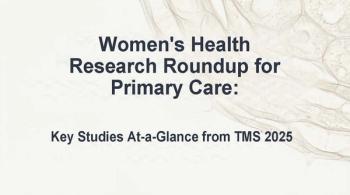
Gabapentinoid Use Increasing in US Despite Concerns Over Coprescribing, Off-Label Use
Gabapentinoid use increased from 4.0% of the population reporting use of the medication in 2015 to 4.7% in 2021, according to new data.
Gabapentinoid use in the US has increased in the past several years, going from 4.0% of the population reporting use of the medication in 2015 to 4.7% in 2021, according to new data published in Annals of Family Medicine.
“Gabapentinoids are a commonly used medication class, prescribed primarily for
Citing ongoing pressure to limit coprescribing of
For the current study, investigators used the cross-sectional (2002-2021) and longitudinal versions (2002-2020) of the MEPS. They aimed “to investigate rates of gabapentinoid users, better characterize to whom and for what indications the medications are prescribed, and describe patterns of how the medications are started, stopped, or continued year-over-year.”
FINDINGS
Investigators reported that since the last publication, the proportion of the population reporting a gabapentinoid medication increased from 4.0% (95% CI 3.6-4.4) in 2015 to 4.7% (95% CI 4.4-5.1) in 2021.
“The proportion of the population reporting gabapentin increased throughout the study, while pregabalin use was largely unchanged after 2008,” added Johansen and Maust.
The probability of gabapentinoid users increased for nearly all ages between 2002-2004 to 2019-2021, according to the results.
In addition, between 2018-2021, only 37.6% (95% CI, 35.6-39.8) of gabapentinoid users did not use any other medication for chronic pain, “which is concerning in light of the US Food and Drug Administration’s 2019 warning about co-prescribing of gabapentinoids with other central nervous system depressants,” noted researchers. Further, the results indicated that use of gabapentinoids increased with each additional centrally acting medication examined.
Between 2017 to 2021, the medical conditions with the highest proportion of gabapentinoid use were musculoskeletal pain and diabetes, however, these conditions had lower odds ratios of use than other conditions such as polyneuropathies and fibromyalgia, added researchers.
New gabapentinoid users outnumbered those who stopped using gabapentinoids between 2011-2012 and 2017-2018, although this difference decreased from 2018-2019 and 2019-2020, according to the study results.
“The study has numerous limitations including changes in survey design in 2020, a presumed under-reporting of short-term opioid and muscle relaxants, lack of directly linking medical conditions to a gabapentinoid, imperfect survey methodology to determine use of medications as synchronous vs asynchronous throughout a year, and a lack of accounting for gabapentinoid use among the institutionalized US population,” stated Johansen and Maust.
They concluded: “While these clinical scenarios can be challenging, continuation [of gabapentinoid use] should be reconsidered at regular intervals.”
Source: Johansen ME, Maust DT.
Newsletter
Enhance your clinical practice with the Patient Care newsletter, offering the latest evidence-based guidelines, diagnostic insights, and treatment strategies for primary care physicians.


















































































































































































































































































